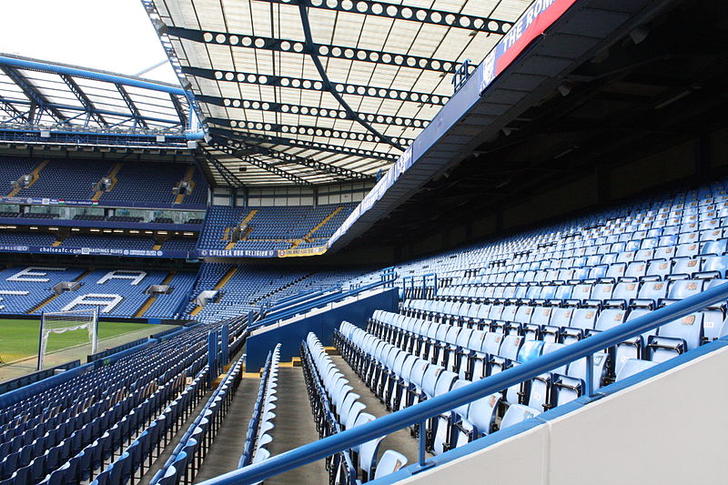
Let’s say right from the word go this is a matter of pure subjectivity. Every single person who goes to a football ground will have their own sense of what the best place to sit is and what the best view of the pitch is. We’ll try to remain as neutral as possible here, looking at all of the different viewpoints at a football ground in a general sense and explaining what they have to offer for those wondering roughly where to buy tickets for.
It’s also important to note that each football ground has its own characteristics. Objectively, you’ll get the best view of the pitch from the centre of one of the side stands, but at Anfield the Kop is located behind one of the goals. It might not be the best view, but the atmosphere and experience is worth losing a good view for. Equally at more modern stadiums the sight lines should be good from everywhere.
What Are The Best Parts Of A Ground To Sit In?
The first place to start when it comes to talking about the best view and seats at a football ground is by exploring the different sections of a football stadium. This is a somewhat generic take on that, given that the various stadia that exist will have their own eccentricities.
If you’re a season ticket holder at a ground where the view from the end is brilliant, for example, you might disagree with our take on things.
Side Stands
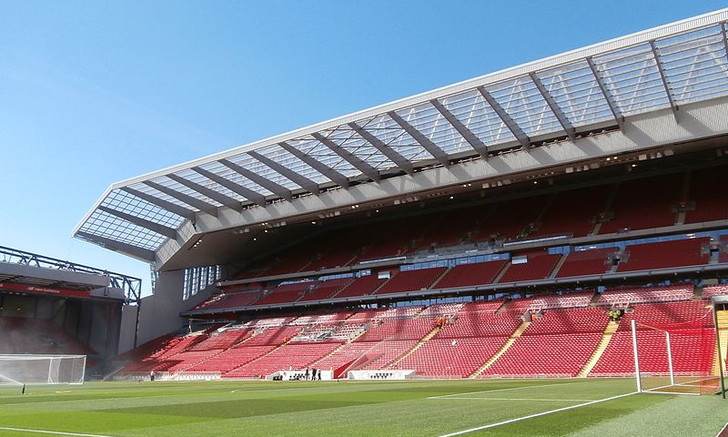 Objectively speaking, the side stands will offer the best view of the pitch, provided you’re near to the centre and relatively high up. A seat in the side stand will present you with a good view of the whole pitch, with the position ensuring that the depth of vision will allow you to understand what’s happening on the field of play at any moment. You will be able to figure out tactics and formations relatively easily.
Objectively speaking, the side stands will offer the best view of the pitch, provided you’re near to the centre and relatively high up. A seat in the side stand will present you with a good view of the whole pitch, with the position ensuring that the depth of vision will allow you to understand what’s happening on the field of play at any moment. You will be able to figure out tactics and formations relatively easily.
There is a reason that the majority of football grounds put the expensive hospitality boxes along the side of the pitch. People who are paying more than usual amounts of money to be present in a stadium want the very best, so opting for the side view ensures that they get that. Similarly, the dugouts are always at the side of the pitch and in the centre because it afford the managers the best view of the action.
Ideally you want to be central in the side stands, as close to the halfway line as possible. The further towards one end or another you are, the more difficult it will be to see the pitch and to understand exactly what’s happening. The more that the angle of view becomes altered, the harder it is to understand the depth of the pitch and therefore the various players’ positions on it, as well as where the ball is.
End Stands
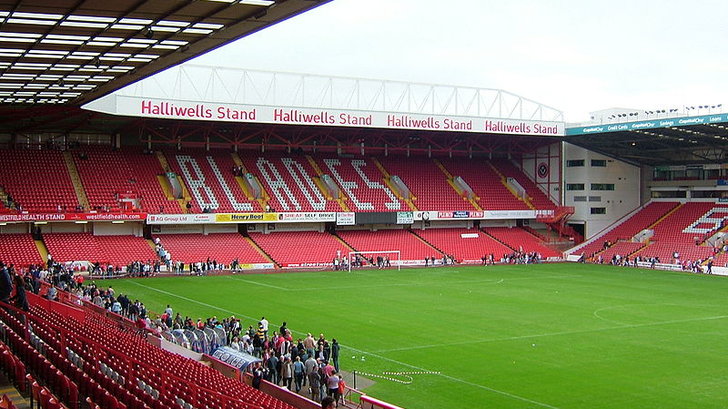
Ultimately, where is best to sit in a football stadium will always be a personal choice. For some, being closer to the goal allows them to feel like they’re part of the action more than if they were sitting along the side and couldn’t tell whether the ball had hit the back of the net or not. It’s also worth noting that the most vociferous supporters tend to sit behind the goals, so it’s worth sitting there if you’re keen on experiencing the atmosphere.
Because the seats behind the goals are not as good as the ones along the side of the pitch, they are usually cheaper to buy. This means that they’re popular, which is part of what provides the better atmosphere. The Kop at Anfield is world-famous because of the flags and banners that are displayed before matches, with the old feeling being that the supporters there could ‘suck the ball across the line’. In the past end stands were typically standing too and attracted mostly working class fans whereas side stands were seated and seen as more middle class, having an obvious affect on the atmosphere.
When seated in an end stand you struggle to get depth perception on the pitch, which is why sometimes when a ball whistles just wide at the opposite end it is the supporters in end stand that often jump up thinking it is a goal. It is also probably why referees get most angst from supporters in the end stands as they have a poorer perception of depth for things like fouls.
Again, you want to be as central as you can if you’re opting for a ticket in one of the end stands. That will provide you with the best view of the goal without obscuring what you can see. The further out to the edges you are, the more the angle will offer a confusing take on proceedings and you won’t feel as though you’re part of the action as much. There’s no hard and fast rule on any of that, of course.
Of course, this is the main reason away supporters often get put in an end stand towards one side of the pitch, because this is generally seen as the poorest viewing point.
High Up Or Low Down?

Figuring out where to sit at a football stadium isn’t just about picking the right stand and deciding whether to sit in the central section or out to the sides. You also need to decide whether being high up or lower down is best. In all honesty, there’s something of the ‘Goldilocks’ approach to it all, with neither too high nor too low being ideal and somewhere in between the two being just right.
Obviously the key thing is deciding what it is that you want to get from your match-going experience. Whether you’re in a side stand or one of the ones behind the goals, being too far down will mean that your view isn’t great. It could be obscured by the goal, for example, or if you’re too low down then you’ll be looking up at the players and won’t be able to get a good sense of how the match is transpiring.
If you want to understand how the match is panning out from a tactical point of view then the best seats will be high up in a side stand. That will mean that you can get an almost bird’s eye view of the pitch, watching the players take up their positions and shift shape as various phases of the match develop. It is an ideal vantage point for people that don’t want to be caught up in the emotion of a game.
Whilst being low down will offer you a worse view of the match than being high up, it will allow you feel as though you’re much more involved in proceedings. There is something quite clinical about being high up and away from the action that removes you from the atmosphere. For certain people this will be ideal, whilst others would prefer to see less of the game but experience more of the goings on at a ground.
Which Part Of The Row Is Best?
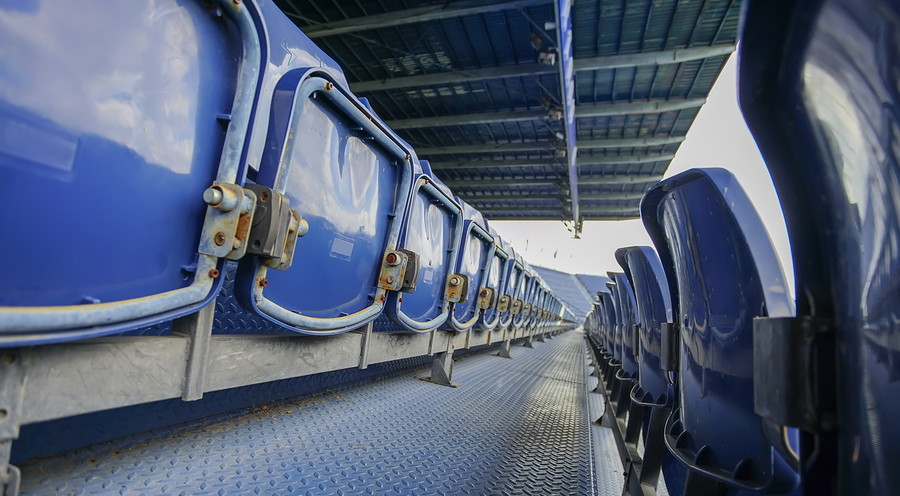 As well as which stand to be in and where about to sit within that stand, another consideration that you’ll have to make is where in the row you’re sat. Each part of a row offers something different, so this is arguably the most personal selection you’ll have to make. Are you someone that wants to concentrate on the match and be disturbed as little as possible? If so, sitting in the middle of the row will be best.
As well as which stand to be in and where about to sit within that stand, another consideration that you’ll have to make is where in the row you’re sat. Each part of a row offers something different, so this is arguably the most personal selection you’ll have to make. Are you someone that wants to concentrate on the match and be disturbed as little as possible? If so, sitting in the middle of the row will be best.
If, on the other hand, you know that you’re a fidget or that your bladder will require you to pay frequent visits to the loo then getting a seat at the end of the row will be best. The problem with that, though, is that other people will be needing to squeeze past you on a regular basis, so the end of the row is a nightmare spot for someone who wants to concentrate on the match and not be disturbed.
Thinking About Stand Gradient
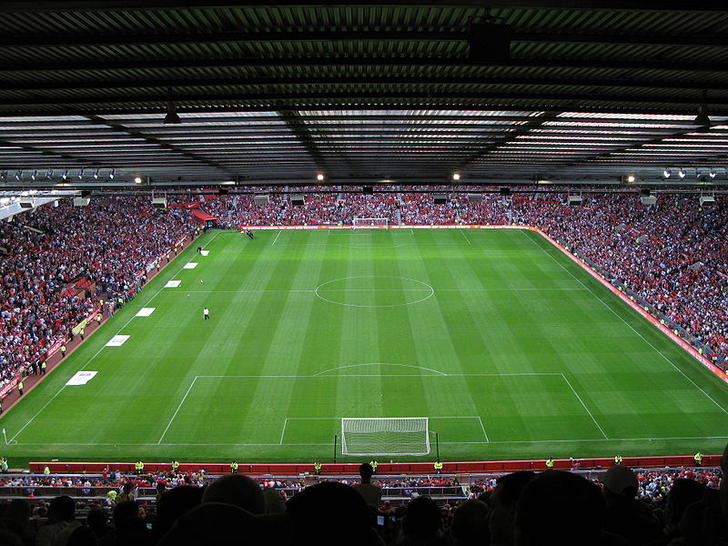
One thing that you have no choice over in terms of attending a match is the gradient of the stands. You’ll be able to choose this if you want to go to see any old football match and don’t care about where it is, but if you’re determined to go to Anfield, to continue that example from earlier, then there’s not much you can do about how steep or otherwise the stands are.
In terms of making a choice that suits you, it’s another one where you’ll have to figure out what works for you personally. Stands that have an extremely steep gradient have the benefit of allowing most supporters to feel as though they’re part of the action. The downside is that some people can feel quite sick sitting so high up, or can struggle to get to their seat if they’re unsteady on their feet.
A stand with a shallow gradient is excellent if you’re someone that can’t walk up steep flights of stairs, but the further back you are the more likely it is that you’ll be quite far away from the pitch in that instance. You’ll feel less part of the action and you’ll be able to see less of what’s going on. Then again, if you’re at the back of an extremely steep stand you’ll also struggle to see what’s happening because you’ll be so far away.
It’s All Personal Choice

As we’ve mentioned time and again in this piece, what works best for each football supporter will be a matter of personal choice. Tickets for some football clubs, such as Liverpool and Manchester United, are far more difficult to get hold of than for the likes of Everton or Manchester City. If what you want to do more than anything else is see the club, you’ll have to take whatever you can get at Anfield or Old Trafford.
At Goodison Park or The Etihad, however, you’re likely to have much more choice in where to sit. This is where you’ll want to weigh up all of the various factors discussed here and figure out which ones are the most important to you. Some stadiums, like the Nou Camp, are an experience in and of themselves so you’ll want to soak it up. If you’re a keen Newcastle fan, meanwhile, you’ll just love being at St. James’ Park.
The final thing to mention is that sometimes the choice is taken out of your hands. If you’re visiting a ground as an away supporter then you’ll have to sit in a specific section and won’t have much choice in the whys and the wherefores. Most away supporters are there to create an atmosphere and get behind their club, rather than marvel at the brilliance of the football ground that they find themselves in.
